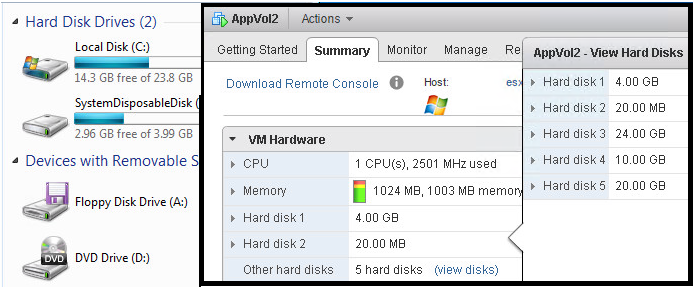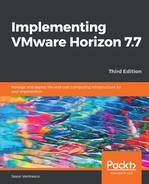Chapter 1, VMWare Horizon Infrastructure Overview, provided an overview of most of the key features of VMware App Volumes. To summarize that information, VMware App Volumes can be used to decouple applications from Horizon desktops and Windows RDS servers, be they user-installed or ones packaged and assigned by App Volumes administrators. The following diagram explains the conceptual relationship between the Horizon desktop and the Windows RDS server OS, the App Volumes Agent, and the AppStacks and Writable Volumes:

The capabilities enabled by App Volumes are transparent to the client, as shown in the following screenshot, which shows the client view from Windows Explorer for a Horizon desktop, next to the virtual desktop hard disk configuration as seen in the vSphere web client. In the web client, we see Hard disk 4, which is the writable volume, and Hard disk 5, which is a single App Volumes AppStack (the remaining disks are all part of the Horizon non-persistent desktop). These disks are silently and transparently integrated into the OS at login, and detached when the client session is ended:

When combined with a user persona management solution, such as the one discussed in Chapter 12, Implementing User Environment Manager, App Volumes enables Horizon customers to provide a persistent desktop experience while leveraging non-persistent desktops (using Writable Volumes), and while also reducing the number of virtual desktop master images to support, since we have decoupled their applications (using AppStacks).
In the remainder of this chapter, we will learn how to implement and administer VMware App Volumes.
